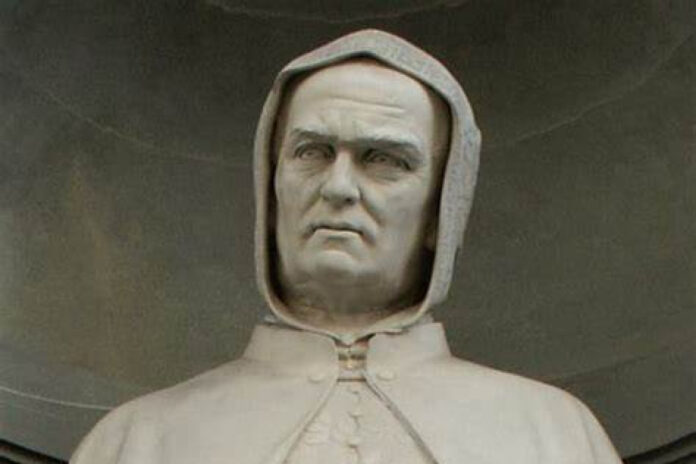Giotto di Bondone, commonly known as Giotto, stands as a towering figure in the history of Western art. A pioneer of the Renaissance, his innovative approach to painting and architecture marked a significant departure from the medieval styles that preceded him. This article delves into Giotto’s life, his major works, and his enduring legacy.
Early Life and Education
Birth and Background
Giotto di Bondone was born around 1267 in Colle di Vespignano, a small village near Florence. His exact birth date remains uncertain, but his impact on the art world is indisputable. He was born into a period dominated by Byzantine art, characterized by its rigid and symbolic style.
Apprenticeship and Early Influences
Legend has it that Giotto was discovered by the renowned painter Cimabue while drawing sheep on a rock. Impressed by his talent, Cimabue took Giotto under his wing. This apprenticeship provided Giotto with the foundational skills and techniques that he would later revolutionize. Although Cimabue’s influence is evident in Giotto’s early works, Giotto quickly developed his own distinctive style.
Breakthrough in Painting
Frescoes in the Scrovegni Chapel
One of Giotto’s most celebrated works is the cycle of frescoes in the Scrovegni Chapel (also known as the Arena Chapel) in Padua, completed around 1305. These frescoes, depicting the lives of the Virgin Mary and Christ, represent a dramatic shift towards naturalism and emotional expression. Giotto’s use of perspective, chiaroscuro (light and shadow), and lifelike figures brought a new sense of realism to religious art.
The Kiss of Judas
Among the frescoes in the Scrovegni Chapel, “The Kiss of Judas” stands out for its emotional intensity and dramatic composition. The scene captures the moment Judas betrays Jesus with a kiss, surrounded by a throng of soldiers. Giotto’s ability to convey tension and human emotion set this work apart from the more static compositions of his contemporaries.
The Ognissanti Madonna
Another significant work by Giotto is the “Ognissanti Madonna,” created around 1310 for the Church of Ognissanti in Florence. This altarpiece depicts the Virgin Mary enthroned with the Christ Child, surrounded by angels. Unlike the flat, two-dimensional figures typical of Byzantine art, Giotto’s Madonna and Child are rendered with a sense of volume and spatial depth, bringing a new level of realism to religious iconography.
Innovations in Painting
Use of Perspective
One of Giotto’s most groundbreaking contributions to art was his use of perspective. While not the linear perspective perfected by later Renaissance artists, Giotto’s intuitive approach created a sense of three-dimensional space. His figures inhabit convincingly realistic settings, with architecture and landscapes that suggest depth and dimension.
Emotional Realism
Giotto’s ability to convey human emotion was revolutionary. His figures, whether in joy, sorrow, or contemplation, exhibit a range of expressions and body language that had never been seen before in Western art. This emotional realism made religious scenes more relatable and impactful for viewers, bridging the gap between the divine and the human.
Architectural Achievements
The Bell Tower of Florence Cathedral
In addition to his accomplishments as a painter, Giotto made significant contributions to architecture. In 1334, he was appointed chief architect for the Florence Cathedral, a position that allowed him to design the cathedral’s campanile (bell tower). Known as Giotto’s Campanile, this tower is a masterpiece of Gothic architecture, characterized by its elegant proportions and richly decorated surfaces. Although Giotto did not live to see its completion, his design set the standard for subsequent phases of construction.
The Basilica of Santa Croce
Giotto also played a role in the design and decoration of the Basilica of Santa Croce in Florence. While the exact extent of his involvement is debated, it is believed that he contributed to both the architectural planning and the frescoes within the basilica. Santa Croce, known as the Temple of the Italian Glories, houses the tombs of many illustrious Italians, including Michelangelo, Galileo, and Machiavelli, further cementing its historical and cultural significance.
Major Works and Contributions
The Life of St. Francis Frescoes
One of Giotto’s significant projects was the series of frescoes depicting the life of St. Francis in the Basilica of San Francesco in Assisi. Completed around 1290-1295, these frescoes illustrate scenes from the saint’s life with unprecedented realism and narrative clarity. Giotto’s portrayal of St. Francis’s humility, devotion, and miracles brought the saint’s story to life in a way that resonated deeply with viewers.
The Renunciation of Worldly Goods
Among the frescoes in Assisi, “The Renunciation of Worldly Goods” is particularly noteworthy. The scene depicts a young Francis stripping off his clothes to renounce his father’s wealth and embrace a life of poverty. Giotto’s use of gesture and expression powerfully conveys the emotional intensity of the moment, highlighting the saint’s spiritual transformation.
The Peruzzi and Bardi Chapels
In Florence, Giotto worked on frescoes for the Peruzzi and Bardi chapels in the Basilica of Santa Croce. These frescoes, depicting scenes from the lives of St. John the Baptist and St. John the Evangelist (Peruzzi Chapel) and the life of St. Francis (Bardi Chapel), further demonstrate Giotto’s mastery of narrative and emotional expression. Although some of these frescoes have suffered from deterioration over the centuries, their impact on Renaissance art remains undiminished.
Giotto’s Influence and Legacy
The Dawn of the Renaissance
Giotto is often credited with initiating the Renaissance in art. His break from the Byzantine tradition and his emphasis on naturalism and human emotion paved the way for future artists. Figures like Masaccio, Michelangelo, and Leonardo da Vinci were all influenced by Giotto’s innovations, which laid the groundwork for the full flowering of Renaissance art in the 15th and 16th centuries.
The Giotto Revival
Interest in Giotto’s work experienced a revival during the 19th century, particularly among the Pre-Raphaelite Brotherhood in England. Artists like Dante Gabriel Rossetti and John Everett Millais admired Giotto’s sincerity, emotional depth, and commitment to naturalism, seeing him as a precursor to their own artistic ideals.
Preservation and Study
Today, Giotto’s works continue to be studied and preserved by art historians and conservators. The Scrovegni Chapel, in particular, has undergone extensive conservation efforts to protect its priceless frescoes. Modern technology, such as digital imaging and infrared reflectography, has allowed researchers to gain new insights into Giotto’s techniques and working methods, ensuring that his legacy endures for future generations.
Giotto’s Artistic Techniques
Fresco Technique
Giotto was a master of fresco painting, a technique that involves applying pigment to wet plaster. This method requires precision and speed, as the plaster dries quickly. Giotto’s skill in fresco allowed him to create large-scale works with vivid colors and durable surfaces. His ability to work on such a demanding medium with consistent quality and detail is a testament to his technical prowess.
Use of Color and Light
Giotto’s use of color and light was revolutionary for his time. He employed a rich palette to create vibrant and lifelike scenes. His understanding of light and shadow added depth to his figures, enhancing their three-dimensionality. This approach was a significant departure from the flat, gold backgrounds of Byzantine art, contributing to the sense of realism in his work.
Personal Life and Character
Relationships and Personality
Giotto was known for his humility and modesty, qualities that endeared him to his contemporaries. Despite his fame and success, he remained grounded and dedicated to his craft. His relationships with patrons, such as Enrico Scrovegni, and fellow artists reflect his ability to collaborate and communicate effectively, furthering his reputation as a respected and influential figure in the art world.
Death and Legacy
Giotto died in 1337 in Florence, leaving behind a legacy that would influence the course of Western art for centuries. His burial site in Santa Maria del Fiore, the Florence Cathedral, stands as a tribute to his contributions to the city’s artistic and architectural heritage. Giotto’s influence extends beyond his own works, shaping the development of Renaissance art and inspiring countless artists to pursue naturalism and emotional depth in their own creations.
FAQs
1. What are some of Giotto’s most famous works?
Giotto’s most famous works include the frescoes in the Scrovegni Chapel, the “Ognissanti Madonna,” and the frescoes in the Basilica of San Francesco in Assisi.
2. How did Giotto influence Renaissance art?
Giotto influenced Renaissance art through his use of perspective, naturalism, and emotional expression, breaking away from the rigid and symbolic styles of Byzantine art.
3. Where can Giotto’s works be seen today?
Giotto’s works can be seen in various locations, including the Scrovegni Chapel in Padua, the Basilica of San Francesco in Assisi, and the Basilica of Santa Croce in Florence.
4. What was Giotto’s role in architecture?
Giotto contributed to architecture as the chief architect of the Florence Cathedral, designing its campanile, and playing a role in the architectural planning of the Basilica of Santa Croce.
5. What techniques did Giotto use in his paintings?
Giotto was a master of fresco painting and used a rich palette and understanding of light and shadow to create vibrant, lifelike scenes with a sense of depth and realism.
Conclusion
Giotto di Bondone’s pioneering contributions to painting and architecture marked a pivotal moment in the history of Western art. His innovative techniques, emotional realism, and architectural designs set the stage for the Renaissance and influenced generations of artists. Giotto’s legacy continues to be celebrated and studied, ensuring that his impact on the art world remains as enduring as his masterpieces.
Giotto di Bondone’s work represents a transformative period in art history, where the seeds of the Renaissance were sown. His legacy, characterized by groundbreaking techniques and emotional depth, continues to inspire and captivate art enthusiasts and scholars around the world.

